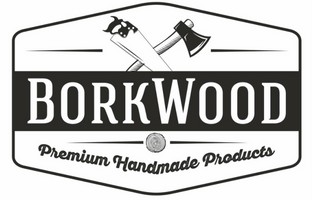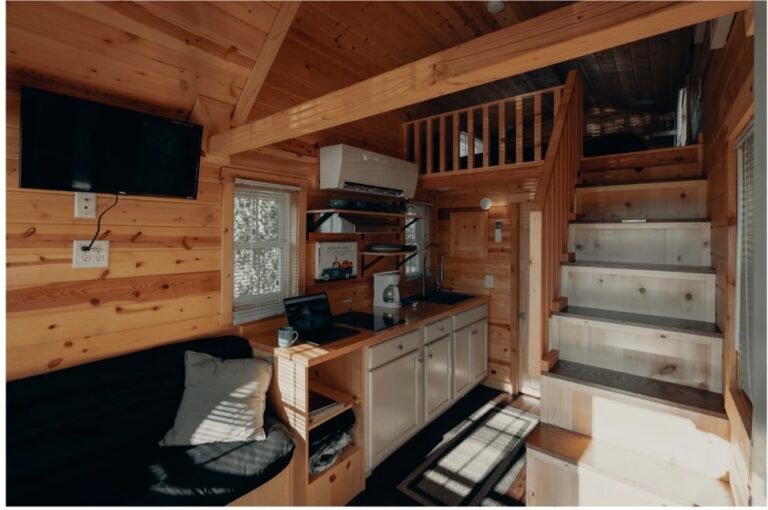Setting Up Your Cabinet Shop Plumbing: Installation Tips and Best Practices
Setting up a cabinet shop is not just about choosing the right tools or the layout of workbenches; it involves paying close attention to the plumbing systems that power your operations. Have you ever found yourself knee-deep in sawdust, only to realize that your sink is backed up or your workstation lacks proper water supply? These frustrating moments can disrupt your workflow and impact productivity. By understanding how to properly install and manage plumbing in your shop, you can create an efficient environment where everything flows smoothly literally! Let’s dive into practical tips and best practices that’ll help you set up a plumbing system that supports your craftsmanship without hiccups.
When setting up plumbing for your cabinet shop, it is essential to consider the layout and workflow of the space, ensuring that sinks and fixtures are conveniently positioned while avoiding potential issues with drainage and water supply. Additionally, adequate measurements should incorporate plumbing dimensions to prevent installation complications, ultimately leading to a smoother and more efficient cabinet-making process. For more information see the info center here.
Planning Your Cabinet Shop Layout
A well-planned cabinet shop layout does more than just look good; it creates a streamlined workflow that can make all the difference in productivity and ease of installation. For starters, allocate at least 100 square feet specifically for plumbing installations. This amount of space allows you to properly accommodate water supply lines and drainage, which are crucial for your shop’s operations.
Design With Workflow in Mind
Position workstations strategically. Imagine you’re in the middle of a busy workday: placing sinks near where wood glues and chemical treatments occur allows quick access without interrupting workflow. It’s vital to consider waste disposal as well. For instance, having your drain line close to your sink minimizes hassle associated with liquid waste management, ensuring you don’t have to sprint across the room when it’s time to clean up.
Additionally, proper drainage matters significantly. Installing a 2-inch PVC pipe for drainage can effectively handle waste from sinks and other fixtures, eliminating clogs that might slow down production.
Safety and Accessibility
Don’t overlook safety while planning. Ensure that crucial plumbing components, such as emergency shut-off valves, are easily accessible yet out of harm’s way. An excellent rule of thumb is to keep these valves within reach but away from high-traffic areas where employees move about. This arrangement enhances safety and prevents potential accidents that could halt operations.
Finally, maintaining clear access paths can make your workspace feel less cluttered while enhancing flexibility and maneuverability. Ensure that every workstation has enough surrounding space for workers to perform their tasks efficiently without feeling cramped. By creating an environment built around workflow and safety considerations, you’re preparing for long-term success.
With a solid understanding of how to optimize your workspace, we can now turn our attention to the essential materials that will support your plumbing endeavors.
Choosing the Right Plumbing Materials
The decisions you make regarding plumbing materials can significantly dictate not only the durability of your setup but also how much maintenance you’ll need to invest in down the line. This is particularly vital in a cabinet shop, where water supply needs are frequent and intense, often coupled with dust and debris that can easily compromise piping systems. Choosing wisely can mean avoiding costly repairs or emergency replacements later on.
PEX vs. Copper: A Debate
Let’s explore whether PEX (cross-linked polyethylene) or copper piping is ideal for your cabinet shop. On one hand, PEX has surged in popularity due to its light weight, flexibility, and relatively low cost. Its ease of installation makes it an attractive choice for many contractors who appreciate streamlined processes. However, some professionals maintain that copper offers superior durability and can hold up under heavy usage better than PEX. This point raises a significant debate among experts in the field.
It’s crucial to remember that while PEX is resistant to scale and chlorine, which can extend its lifespan, it does have a limit when it comes to temperature tolerance—something that might be a concern depending on where your cabinet shop is located. Conversely, copper pipes are praised for their longevity, having been used in construction for decades. Yet, they may corrode over time if not properly maintained.
Comparison Between PEX and Copper
Here’s a quick look at how these two materials stack up against each other:
|
Material |
Durability |
Cost |
Installation Ease |
Susceptibility to Leaks |
|
PEX |
Moderate |
Low |
High |
Low |
|
Copper |
High |
High |
Moderate |
Moderate |
Now that we’ve examined these materials closely, understanding their respective strengths and weaknesses will enable you to make a well-informed decision suited to your cabinet shop’s specific environment and work demands.
With this foundational knowledge in place, it’s essential to shift our attention to optimal configurations that can enhance functionality and efficiency within your setup.
Effective Piping and Valve Placement
The placement of pipes and valves can be the backbone of a well-functioning cabinet shop plumbing system; it dictates how smoothly everything will run. A common mistake many make is underestimating how crucial strategic layout can be. For instance, when you install shut-off valves at key points—such as near your main water supply and before fixtures you enable better control and isolation of your plumbing system during maintenance or repairs.
Think of it as setting up a series of roadblocks that can easily redirect water flow without jeopardizing the entire operation; it’s all about minimizing chaos during unforeseen circumstances.
Beyond just their initial placement, optimizing the number of shut-off valves along the pipeline allows for targeted access, enabling quick fixes when leaks or other issues arise. Additionally, if you have multiple workstations, using dedicated valves for each area can save time and energy since you won’t need to shut down everything to fix one small leak. This segmentation not only simplifies repairs but also makes troubleshooting less intimidating.
Now, let’s consider the traditional approach of hiding plumbing behind walls. While this can provide a clean look, it often comes with significant downsides. Imagine discovering a leak in a concealed pipe; having to cut through drywall may escalate a simple fix into a lengthy ordeal.
Leaving critical sections partially exposed may seem counterintuitive, but think about convenience. By giving yourself visibility to these connections, you’re equipping yourself for easier inspections and adjustments as necessary. If something goes wrong, you’ll thank yourself for this foresight.
“Plumbing isn’t just about getting water from point A to B; it’s about designing an efficient, accessible system that stands up to daily use.”
By thoughtfully considering your piping and valve placements, you’ll ensure a more resilient workspace prepared for future needs. Next, we’ll explore how to create a reliable framework for your water supply needs.
Implementing the Water Supply System
At the heart of any successful cabinet shop lies a well-designed plumbing system. The first step in this journey is to identify your main water source; this could be the municipal line or a private well. Understanding your shop’s demand will help ensure that this source can provide consistent pressure and volume.
For instance, if your cabinet-making process relies heavily on water whether for mixing adhesives, cleaning tools, or maintaining equipment having a reliable and powerful water source is non-negotiable.
Once you’ve identified the water source and assessed its capabilities, it’s time to move on to one of the most important aspects: maintaining consistent water pressure.
Next up are pressure regulators. Proper installation of these devices can spare you from major headaches down the line. Pressure regulators control the flow of water into your piping system to create a balance, preventing damage that might occur due to fluctuating pressure levels.
Imagine running delicate machinery that requires a specific water pressure; an unexpected surge could lead to malfunction or destruction. This step isn’t just about installing hardware; it’s about safeguarding your investment and ensuring longevity.
With that precaution in place, you’ll now focus on developing the framework of your plumbing system.
It’s essential to run primary lines from your main water source using chosen pipe materials like PVC or PEX. These lines should be secured firmly along walls and across floors, with insulation provided in colder areas to prevent water freezing, which can block your pipes or even burst them!
Think about it: you wouldn’t want to come into work only to find a significant plumbing issue waiting for you. Instead, taking this extra precaution saves time and stress later on.
After establishing the primary lines, we can expand further into how these lines serve different areas of your shop.
Now, let’s examine installing branch lines, which are critical for delivering water to specific fixtures such as sinks or spray booths. Carefully run these secondary lines to each workstation while keeping the layout efficient and minimizing bends that could impede serviceability.
The goal here is an organized and logical workstation setup where every tool has access to water without complication.
Finally, let’s complete our water supply setup with one last essential step: connecting everything properly.
The last piece of the puzzle involves connecting branch lines to fixtures as per manufacturers’ specifications. This is where using appropriate sealants and fittings becomes crucial; a poor connection could lead to frustrating leaks that disrupt operations and increase maintenance costs.
Picture this: you’ve finally set everything up only to discover water pooling on the floor because of improperly tightened connections. By taking extra steps now, you’re ensuring long-term functionality and efficiency in your workspace.
Having established a thorough understanding of plumbing setup, let’s now shift our focus towards the next crucial phase, where we will address the specifics of incorporating essential elements into your workspace.
Installing Fixtures and Heaters
When it comes to plumbing in your cabinet shop, proper installation of fixtures and heaters is crucial. Imagine the chaos if you suddenly discover that your faucets are spraying at odd angles or that your water heater can’t keep up with demand during peak usage times. To avoid such frustrating scenarios, understanding the right strategies for positioning and integrating your plumbing fixtures is vital. The main goal here is to create a seamless flow that enhances both functionality and convenience in your workspace.
Hot and Cold Water Separation
Keeping hot and cold water lines separate until they reach the fixtures is one of the keys to an efficient plumbing setup. This method optimizes the performance of your heating units while ensuring a steady temperature when needed. When hot water runs into cold pipes, it cools down faster than desired, causing undue strain on your heater as it works harder to maintain temperatures.
Maintaining separation helps prevent the mixing of hot and cold water, allowing for more reliable heater efficiency while providing consistent temperatures at your fixtures.
Once you’ve established this separation, it’s time to consider one critical aspect of plumbing: heater placement.
Heater Placement
Positioning your water heaters close to points of high usage such as sinks or wash stations will significantly reduce heat loss through pipes. For example, install your heaters near dishwashing areas where hot water is frequently needed. Not only does this save you from waiting ages for hot water, but it also enhances energy efficiency.
Additionally, insulating the heater itself and the surrounding space can maximize operational efficiency. Insulation reduces heat loss, which translates into lower energy consumption and ultimately lower bills.
Following these recommendations for hot and cold separation along with careful heater placement establishes a strong foundation for an efficient plumbing system. Let’s now explore how to ensure everything works smoothly by examining testing methods and adjustments.
Testing and Fine-Tuning Your Setup
After installation, there’s an undeniable sense of accomplishment. Yet, before you can kick back and admire your work, thorough testing is imperative to maintain that satisfaction. Each step in this process plays a pivotal role in assuring that everything operates smoothly and efficiently.
Testing Procedures
Inspect Connections: First things first safety comes before everything else. Go through every joint, fitting, and connection in your plumbing setup. The objective here is to identify any leaks that may have gone unnoticed during installation. A quick tip is to use tissue paper; simply hold it against the fittings and watch for those tell-tale signs of moisture. If the paper gets wet, you’ve located a leak needing immediate attention.
Pressure Testing: After ensuring there are no leaks, it’s time to test the integrity of the entire system more rigorously. Run water through the setup at high pressure to check for weaknesses. By maintaining this increased pressure for at least 24 hours, you prolong the chances of discovering any potential issues before they escalate into major problems.
Temperature Tests: Once you’re confident there are no leaks and the pressure holds steady, check the temperature of hot water reaching your fixtures. Make sure each point delivers water at the desired temperature. If something feels off perhaps it’s running cooler than expected adjustments on your heater thermostat might be necessary.
Fine-Tuning Adjustments
Flow Rates: With all installations confirmed functional, now shift focus to flow rates at every fixture throughout your shop. Each location deserves an adequate supply without overwhelming usage—after all, excessive flow can lead to wasted water! Consider installing flow restrictors where needed; they’re simple fixes that help optimize water usage while still offering solid performance.
Valve Adjustments: As you finalize your plumbing setup, take time to adjust shut-off valves carefully. This will help balance water distribution across all fixtures effectively. Improperly adjusted valves may lead one fixture to hog all the water supply at the expense of others, creating frustration during busy operational moments.
By adhering to these testing procedures and fine-tuning adjustments, you’ll establish a robust and efficient plumbing system that not only meets but exceeds your expectations in your cabinet shop. Regular checks safeguard your investment while enhancing overall functionality for years to come.
In conclusion, investing time in the testing and fine-tuning phase assures long-term reliability and satisfaction with your plumbing setup.






